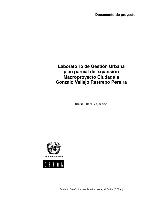Ecological consequences of rapid urban expansion: Shanghai, China
Since China's economic reform in the late 1970s, Shanghai, the country's largest and most modern city, has experienced rapid expansion and urbanization. Here, we explore its landâuse and landâcover changes, focusing on the impacts of the urbanization process on air and water quality, local climate, and biodiversity. Over the past 30 years, Shanghai's urban area and green land (eg urban parks, street trees, lawns) have increased dramatically, at the expense of cropland.
Estimating effects of an urban growth boundary on land development
This study estimates the effects of an urban growth boundary (UGB) on land development decisions in Knox County, TN, using a heteroscedastic probit model. With combined effects of increased land development within the city boundary and decreased development within the UGB and the neighboring town of Farragut after the implementation of UGB, the UGB of Knox County has been successful in urban revitalization within the city boundary and discouraging urban sprawl.
Evidence of urban-induced precipitation variability in arid climate regimes
Urban Containment Policies and the Protection of Natural Areas: The Case of Seoul's Greenbelt
Countries around the world have responded to the problems associated with rapid urban growth and increasingly land-consumptive development patterns by creating a wide range of policy instruments designed to manage urban growth. Of the array of growth management techniques, urban containment policies are considered by some to be a promising approach. This paper focuses on greenbelts, the most restrictive form of urban containment policy. The long-standing greenbelt of Seoul, Republic of Korea is examined as a case study.
Biotope mapping in an urban environment and its implications for urban management in Turkey
Sustainability under threat? The dynamics of environmental change and food production in peri-urban Kano, northern Nigeria
Analysis of the spatio-temporal and semantic aspects of land-cover/use change dynamics 1991-2001 in Albania at national and district levels
In the turmoil of a rapidly changing economy the Albanian government needs accurate and timely information for management of their natural resources and formulation of land-use policies. The transformation of the forestry sector has required major changes in the legal, regulatory and management framework.
Application of protective distances in vicinity of dangerous facilities in urban and spatial plans
Environmental risk management in production, use and transportation of dangerous materials having been actual theme in the world and in Serbia. Although environmental risk is mostly connected with technical issues, since chemical catastrophe in Bophal-lndia (1986) in the world was recognized that this is complex issue that besides of technical-technological, includes also social-economic, organizational and spatial factors. Spatial component of risk management which is regulated by Seveso II Directive in EU is important for planners.
Routeplanner naar een klimaatbestendig Nederland. 4 Casestudies en hotspots
Het klimaat verandert en dat heeft economische, ecologische en sociale gevolgen. Veel van die gevolgen hebben een ruimtelijke weerslag. We kunnen op een aantal ervan met ruimtelijke ingrepen anticiperen om de negatieve effecten op te vangen en van de kansen optimaal gebruik te maken. In Nederland gebeurt dat nog weinig. Doel van het project ‘Casestudies en hotspots’ is om gebieden te inventariseren, waar verwacht wordt dat klimaatverandering zal leiden tot gevolgen, die door een andere ruimtelijke inrichting op maatschappelijk aanvaardbare wijze kunnen worden beheerst.
Laboratorio de gestión urbana: plan parcial de expansión macroproyecto Ciudadela Gonzalo Vallejo Restrepo Pereira
Esta publicación aborda el caso colombiano, donde el sector público está comenzando a implementar instrumentos de gestión urbana que facilitan el ordenamiento y la planificación física del territorio.
Les marchés fonciers et immobiliers des quartiers informels à Phnom Penh, Cambodge
Dans les villes en développement, les marchés fonciers et immobiliers sont en grande partie informels. Ils concernent les pauvres comme les classes moyennes. À Phnom Penh, l’analyse de la dynamique des marchés fonciers et immobiliers et des modes d’accès au logement dans les quartiers informels permet de mieux comprendre les tendances contradictoires des dynamiques en cours. Cette analyse peut alimenter la définition d’une politique de l’habitat destinée à réguler le marché foncier et immobilier et favoriser l’accès à la ville pour les populations pauvres.





